Big & Fast: 17.3-Inch 240 Hz ASUS ROG Strix XG17AHPE Portable USB-C Gaming Monitor
by Anton Shilov on January 24, 2020 3:30 PM EST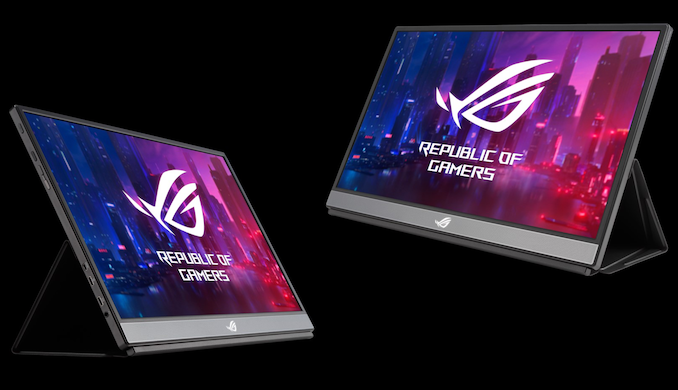
With over half of a dozen external displays for laptops in its lineup, ASUS is a company that takes portable monitors seriously. Following that philosophy, this week the company introduced its rather unique ROG Strix XG17AHPE external LCD, a gaming-focused display offering a Full-HD resolution as well as a 240 Hz refresh rate with variable refresh support. The portable monitor even has its own battery, so it will provide a premium gaming experience even away from a power outlet.
The ASUS ROG Strix XG17AHPE portable display uses a 17.3-inch IPS panel with a 1920×1080 resolution and features a maximum brightness of 300 nits, a 1000:1 contrast ratio, a 3 ms GtG response time, and a maximum refresh rate of 240 Hz refresh rate with VESA’s Adaptive-Sync variable refresh rate technology on top of that. Traditionally for ASUS’s gaming monitors, the ROG Strix XG17AHPE supports GamePlus and GameVisual modes for various genres and types of content, Shadow Boost feature to lighten dark areas in games, and GameFast input technology. The LCD also comes with a stand that can be used to mount the display horizontally or vertically.
| Specifications of the ASUS ROG 17.3-Inch Portable USB-C Monitor |
||
| ROG Strix XG17AHPE | ||
| Panel | 17.3" IPS | |
| Native Resolution | 1920 × 1080 | |
| Maximum Refresh Rate | 240 Hz | |
| Response Time | 3 ms GtG | |
| Brightness | 300 cd/m² | |
| Contrast | 1000:1 | |
| Viewing Angles | 178°/178° horizontal/vertical | |
| Pixel Pitch | 0.1995 mm² | |
| Pixel Density | 127.3 ppi | |
| VRR | VESA Adaptive-Sync | |
| Color Gamut Support | ? | |
| Inputs | USB-C Micro HDMI 2.0 |
|
| Audio | Built-in ESS Sabre 9118 DAC Stereo 1W speakers |
|
| Launch Price | ? | |
The ROG Strix XG17AHPE is aimed at gamers who want to have a bigger screen to play on while they are travelling, offering an expanded window into virtual worlds for a notebook, console, or even a smartphone. For example, there are 15.6-inch laptops with GPUs powerful enough to push games to 240 FPS, but these games will certainly look better on a larger monitor. Also, it can be used to expand screen real estate of a high-end 17.3-inch laptop (and play in a ’32:9’ aspect ratio). In a bid to further improve gaming experience, the portable display has a built-in ESS Sabre 9118 digital-to-analogue (DAC) for headphones and integrated 1W speakers.
The 17.3-inch portable display from ASUS ROG connects to its host system using a USB Type-C (with DP Alt Mode) or a Micro HDMI 2.0 connector and uses another Type-C port for charging. The monitor has its own 7800 mAh battery that provides up to 3.5 hours of gaming when using a 240 Hz refresh rate.
Otherwise as the display is based on a 17.3-inch panel, the ROG Strix XG17AHPE is not exactly a small device by itself, buyers are typically going to want an appropriate bag. Thankfully, the monitor is fairly thin and light itself; it measures 1 cm thick and weighs 1060 grams.
The external monitor is listed at ASUS’s website, so expect it to be available in the foreseeable future. Unfortunately, pricing has yet to be disclosed.
Related Reading:
- CES 2020: ASUS Reveals Portable 15.6-inch ZenScreen MB16ACE USB-C Monitor
- MSI Preps 240 Hz Optix MAG161 External Monitor for Laptops
- Lenovo's New 595-Gram Portable Display: The ThinkVision M14 USB-C Monitor
Source: ASUS


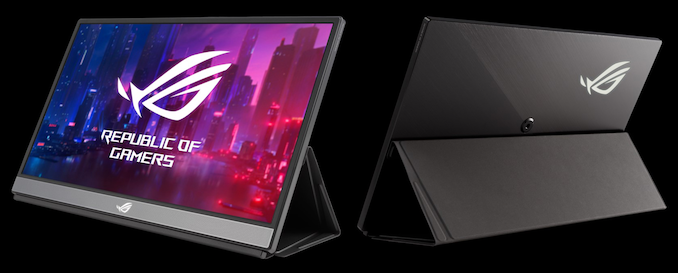
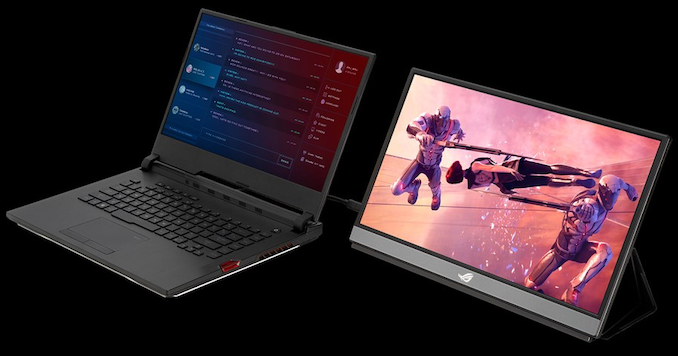
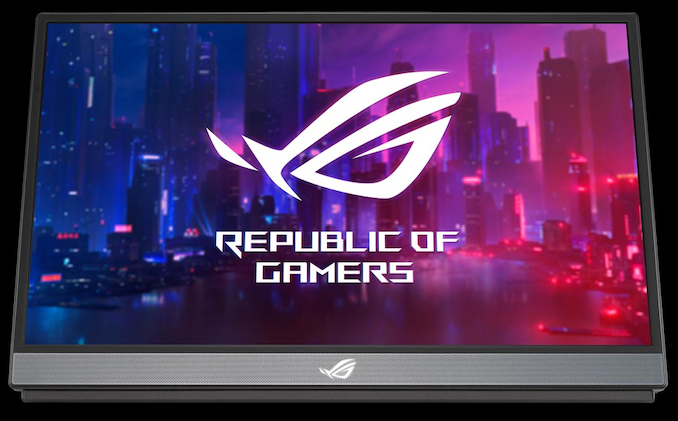
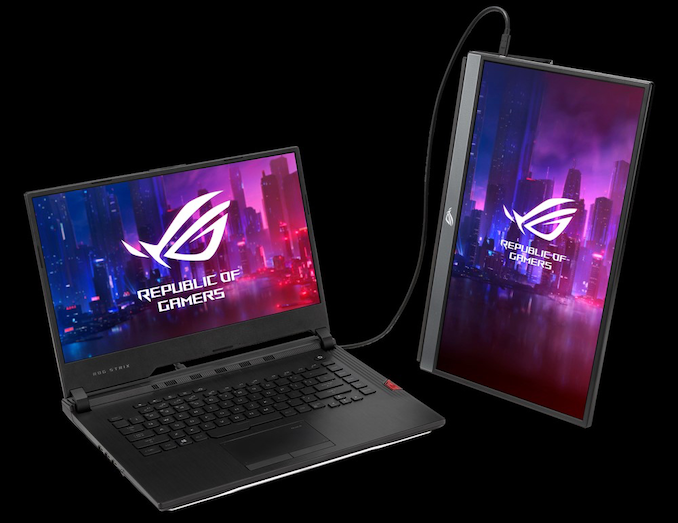








29 Comments
View All Comments
yasamoka - Saturday, January 25, 2020 - link
Let's see, because:1) Your visual perception changes during the day and in response to food, drink, and sleep
2) You are pretty much guaranteed not to have the same room and lighting as anyone else
3) I do not know how good your eyesight is or need to trust it
4) I might not particularly care about your subjective opinion on how you like colors to be setup
5) Therefore, I would rather a scientific, quantitative, numerical, robust, rigorous, absolute, objective, and established approach to measure color accuracy with regards to color gamut, contrast ratio, grayscale balance, minimum / maximum brightness, and, (if need be):
6) then apply my own subjective criteria to realize fully well whether such a display suits my own needs or not?
yasamoka - Saturday, January 25, 2020 - link
To add to my own previous reply:Sometimes, someone doesn't know any better, so why would I think their opinion means much?
If someone has been used to < 1080p low contrast-ratio TN panels all their life, for example, would they really understand what a high-end 5K IPS display or a 4K OLED TV look like? They probably wouldn't even be able to imagine it.
PeachNCream - Monday, January 27, 2020 - link
So basically, dick waving. Got it.Spunjji - Monday, January 27, 2020 - link
You seem to have mistaken a criticism of somebody's approach to recommendations and/or technical discussions for a criticism of their choices.If their purchase is fine for them, that's great. I'm not interested unless I know whether or not it's fine for me, and without objective measurements I simply can't make that judgement. OP's comment isn't helpful because it compares apples to theoretical spider monkeys.
Valantar - Monday, January 27, 2020 - link
Yasamoka gave a good response above, but there is something to add too:- Human perception of color is highly flexible, meaning that you get used to the color of your displays over time. Subjective judgement is thus fundamentally untrustworthy in terms of making recommendations or indirect comparisons.
- Color accuracy actually matters in the real world - have you tried online clothes shopping on an inaccurate display? Looking at furniture? Art or other decor? It can lead to some serious surprises and disappointments. And that's just a single example. Being able to accurately judge how, say, you and your family look in photos posted online is another.
- The monitor isn't mainly part of "the world" but rather a medium through which (parts of) the world can be seen. An inaccurate monitor misrepresents what it displays and as such fails to fulfill its purpose properly. It might still be adequate, serviceable, even seemingly good, but it is still not working as it should, and unnecessarily skewing its representation of the world.
olde94 - Saturday, January 25, 2020 - link
i could see this being popular in the SFFPC comunitysharath.naik - Saturday, January 25, 2020 - link
pointless. why cannot they release a 14 inch 16:10 or 13 inches 3:2 monitors? That is the one you can attach to extend existing laptops that can game.Valantar - Saturday, January 25, 2020 - link
Because, sadly, 3:2 and 16:10 panels are still quite rare, even if they are thankfully growing more common. It will still be quite a while before high refresh rate non-16:9 panels are widely available. Also, widescreen does generally make sense for gaming - taller aspect ratios are better for productivity, but wider horizontal viewing areas make sense in most games.Besides, I think a lot of people will be connecting this to SFF gaming PCs, not laptops. Travelling with a modern 5-7L gaming PC is quite practical, but carrying a gaming monitor isn't - until this arrives, that is.
Smart Web Design - Saturday, January 25, 2020 - link
For some office presentations such a monitor would be perfect. Let's see at what price it will reach after the first impact with the market. If there was also a wireless connection solution, it would be perfect.Eliadbu - Sunday, January 26, 2020 - link
I would still prefer 1440p with 144hz or above.Also 3.5 hours run time seems to be anemic even though it's refreshing at 240hz, the weight and size seems to be reasonable let see how would be the execution.